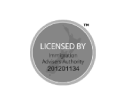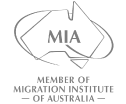Australia’s superannuation system, often called “super,” can seem like a complex maze to navigate, especially for those new to the country. But understanding its fundamentals is crucial for securing your financial future Down Under. This guide distills the key information into a concise overview, specifically tailored for sophisticated investors like you, aiming to simplify your transition and optimize your retirement savings strategy.
What Exactly Is Superannuation?
Think of superannuation as Australia’s version of a 401(k) or other retirement savings plan. It’s a compulsory savings system designed to help Australians accumulate funds for retirement. Throughout your working life in Australia, a percentage of your salary is contributed to your super fund, helping you build a nest egg for your post-work years. This mandatory contribution, known as the Superannuation Guarantee, is currently set at 11% of your ordinary time earnings and is paid by your employer.
Beyond the mandatory contributions, understanding the nuances of superannuation can open doors to significant tax advantages and long-term wealth accumulation. Getting familiar with your options and making informed decisions early can dramatically impact your retirement lifestyle.
Key Types of Super Funds to Know
Navigating the superannuation landscape requires understanding the different fund types available. Here’s a breakdown of the most common options:
- Industry Funds: These funds are generally not-for-profit and are designed to benefit members working in specific industries. They often have lower fees and a strong focus on long-term investment performance. Researching leading industry funds like AustralianSuper or Hostplus can provide a good starting point.
- Retail Funds: These are commercially run funds offered by banks and other financial institutions. While they may offer a wider range of investment options, they often come with higher fees. Understanding the fee structure, as detailed in this guide from the Australian Securities & Investments Commission (ASIC), is crucial.
- Self-Managed Super Funds (SMSFs): As the name suggests, these funds allow you to take direct control of your superannuation investments. SMSFs offer greater flexibility but require a significant time commitment and a thorough understanding of investment management and compliance regulations. The ATO provides detailed information on the responsibilities of SMSF trustees. Consider the implications carefully before setting up an SMSF.
- Public Sector Funds: These funds are specifically designed for government employees, with unique features and benefits tailored to their employment conditions. Checking the APRA’s (Australian Prudential Regulation Authority) website can give you a good list of government sector funds.
Contribution Strategies to Maximize Your Super
Beyond the mandatory employer contributions, you can significantly boost your superannuation balance through voluntary contributions. Understanding the different types of contributions and their associated tax benefits is key to optimizing your strategy:
- Concessional (Before-Tax) Contributions: These contributions are made from your pre-tax income and are taxed at a concessional rate of 15%, which is generally lower than your marginal tax rate. Salary sacrificing, where you agree with your employer to contribute a portion of your pre-tax salary to super, is a common strategy. Keep in mind that concessional contributions are capped annually, and exceeding this limit can result in additional tax.
- Non-Concessional (After-Tax) Contributions: These contributions are made from your after-tax income and are generally not taxed when they enter your super fund. However, any earnings generated by these contributions within the fund are taxed at the concessional rate of 15%. There are also annual limits on non-concessional contributions, but unused portions can potentially be carried forward from previous years, subject to certain conditions.
- Spouse Contributions: If your spouse has a low income or is not working, you may be eligible to make contributions on their behalf and receive a tax offset. The eligibility criteria and offset amounts are detailed on the ATO website.
Investing Your Super: Aligning with Your Risk Profile
Once your contributions are in your super fund, the next crucial step is to choose an investment strategy that aligns with your risk tolerance and investment goals. Most funds offer a range of investment options, from conservative to high-growth:
- Conservative Options: These options typically invest in lower-risk assets like cash and fixed-income securities. They offer greater stability but generally provide lower returns.
- Balanced Options: These options offer a mix of asset classes, including equities, property, and fixed income, providing a balance between risk and return.
- Growth Options: These options invest primarily in equities and property, aiming for higher returns but also carrying a higher level of risk.
Understanding your own risk tolerance and time horizon is essential when selecting an investment strategy. If you’re closer to retirement, you may prefer a more conservative approach to preserve your capital. Conversely, if you have a longer time horizon, you may be comfortable with a higher-growth strategy to maximize your returns. Many funds offer risk profiling tools to help you assess your suitability for different investment options. ASIC’s MoneySmart website offers comprehensive resources on understanding investment risk and return.
Accessing Your Superannuation: Understanding the Rules
While superannuation is designed to be a long-term savings vehicle for retirement, there are specific rules governing when and how you can access your funds. Generally, you can access your super when you reach your preservation age (which varies depending on your date of birth) and retire. Understanding these rules is crucial for effective retirement planning. The ATO provides a clear explanation of the conditions of release.
In certain limited circumstances, you may be able to access your super early, such as in cases of severe financial hardship or on compassionate grounds. However, these exceptions are subject to strict conditions and require approval from the relevant authorities.
A Final Thought: Seek Professional Advice
While this guide provides a concise overview of the Australian superannuation system, it is not a substitute for personalized financial advice. Given the complexities involved, consulting with a qualified financial advisor can help you develop a tailored strategy that aligns with your specific circumstances and goals. A financial advisor can assess your risk profile, help you choose the right investment options, and ensure you are maximizing the tax benefits available to you. The Financial Planning Advice Association (FPA) of Australia offers a directory of qualified financial advisors.
By understanding the fundamentals of superannuation and taking a proactive approach to managing your retirement savings, you can pave the way for a financially secure and fulfilling future in Australia.










